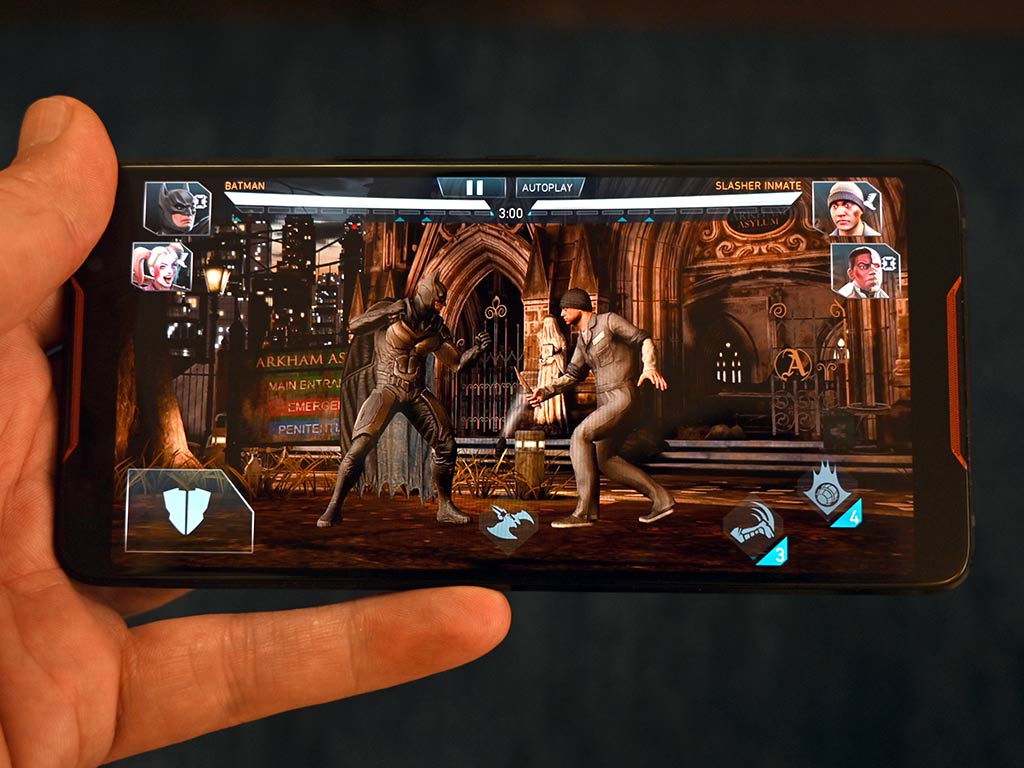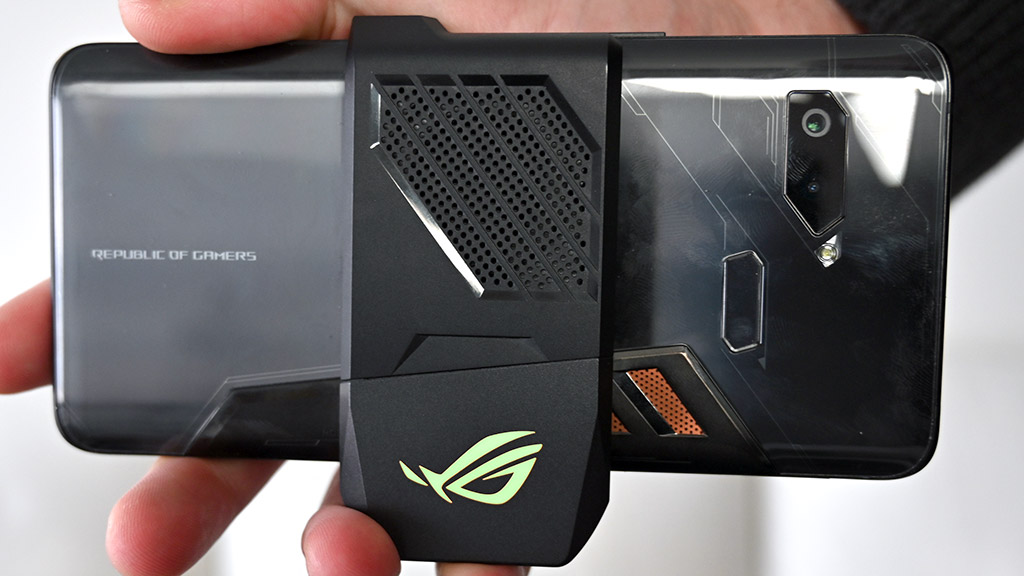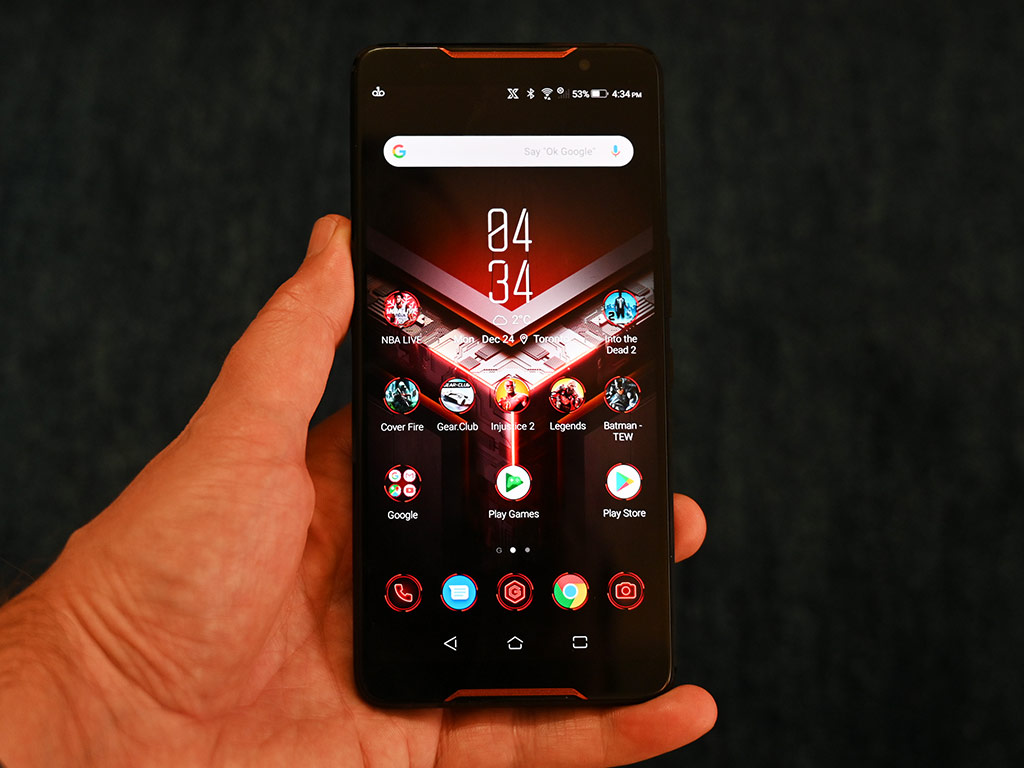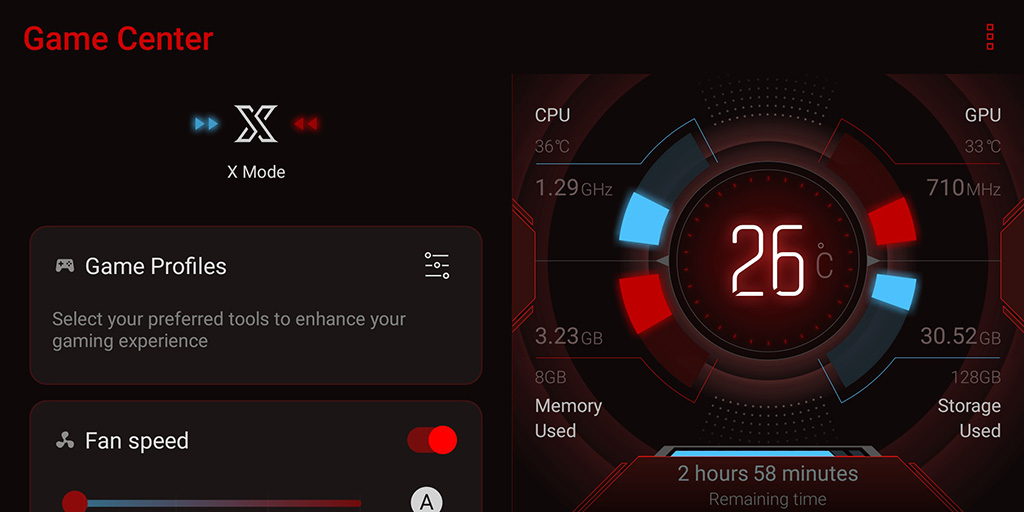
ASUS takes mobile gaming a lot more seriously with the ROG Phone, a handset built to play the most demanding games, with air cooling to boot.
A “gaming phone” may seem odd if you’re not into playing games on your phone the same way you would on a game console at home. The ASUS ROG (Republic of Gamers) brand focuses on gamers, and this marks the first time its attempted to do something similar on a smartphone.
That focus is not only sincere, but it’s patently obvious, which is why I’m going to be specific about who this is for. If you have little to no interest in playing a lot of games on a phone, the ROG Phone isn’t for you. I’m not talking about the casual Candy Crush types, I’m talking about Injustice 2, Modern Combat 5 and others like them; titles emulating a console experience.
Built for gamers
ASUS ROG Phone SpecsDisplay: 6.0-inch 2160 x 1080 IPS LCD display 18:9 aspect ratio with 402 pixels per inch |
Making a “gaming phone” requires taking a few different approaches. To start, the internal components are largely driven by making the ROG Phone robust and responsive. The Snapdragon 845 inside has a higher clock speed than is typical for this chipset, giving it an additional processing edge. Add the 8GB of RAM and Adreno 630 graphics processor to that, and there’s plenty of power under the hood.
Even the 6.0-inch AMOLED display is made for gaming, thanks to a faster 90Hz refresh rate. That’s not quite as fast as the Razer Phone’s 120Hz, but for any OLED panel, it’s the best there is right now. I’ve always liked OLED displays because of the truer blacks and better contrast. I know gamers can sometimes disagree on what type of screen is best, but for me, it was a joy to watch the action on this thing.
Simply looking at every angle of the phone makes it obvious this isn’t a standard handset. The back looks like the top of a gaming laptop. There’s a fingerprint sensor there, along with a dual-lens camera and perforated sections for some air cooling.
The edges feature not one, but two USB-C ports, except the one on the left side, is specifically for a special fan attachment to further cool down the phone from getting too hot. I only ever really encountered a need for it when playing Fortnite. Otherwise, it was fine, but if I ever worried about the CPU heating up too much, it was always there.
There is a headphone jack, so solo gaming sessions don’t have to disturb anyone else. The 4000mAh battery is pretty big for a phone this size, but intensive games always sap power. And then, you have the internal storage. There’s 128GB onboard, and no microSD card slot to expand on that.

Extras and software
I already mentioned the cooling fan attachment that comes in the box, but there’s more. Look along the right edge and there are two etched designs on either flank. Those are technically shoulder buttons called AirTriggers. These work by assigning them to touch buttons a game uses onscreen. It’s an interesting concept, but not all games support it yet, so it depends on what you’re playing.
The overall software experience feels different, with the gaming side punctuated by the ROG Game Center app. This acts as the primary method of assessing performance, not just for the phone, but also for individual games themselves. Each game has a profile, allowing you to apply and manage different settings.
Game Genie takes an overarching approach. These settings let you auto-reject any incoming calls during gameplay, though most of it relates to your own gaming profile. Set a profile picture and directly link to your YouTube and Twitch accounts, as well as determining streaming resolution.
X-Mode is available from the drop-down notification pane. Turn it on and it sets the CPU to its top clock speed. You know it’s on when red rings surround each app or game icon.
The ROG Phone runs on Android 8.1 Oreo, not 9.0 Pie. ASUS will be updating it, but it’s not clear when they will. Does the slightly older Android version affect the phone? Not really. ASUS smartly integrated its own software into the mix. For example, while playing any game, swipe left from the right edge and Game Genie slides in. That lets you start a live stream or make quick adjustments on the fly.

Performance
It was hard to find fault with the ROG Phone’s gaming performance. I always measure my expectations for any mobile gaming experience, but this one pleasantly surprised me. Games felt smooth and lag-free, with responsive controls. Even when the action got intense onscreen with multiple characters or things going on, the phone never wavered.
The level of customization may not be quite what a PC is, but that’s okay. This phone can’t match the graphics power of a good PC, which was perfectly fine by me because it still felt like an extension of a PC or console experience. Any game I threw at it, the phone held up with aplomb.

The extra aesthetic attention, including the visual LED treatment in the back with a glowing logo, only adds to the feeling this is a different kind of device. I would love to see a dedicated gamepad work with it, especially to play retro games through an emulator.
All that power under the hood with a nice screen benefits other basic phone features. Watching video is great, and zipping through the interface is always fast. Calls are pretty good, and you get the advantage of Google Assistant if you want to use it.
I should mention the speakers. They’re front-firing and loud, with support for Headphone:X 7.1 virtual surround sound and AudioWizard for setting listening profiles.
Camera
Being a gaming phone, ASUS treated the camera as something of an afterthought. Yes, there are dual lenses in the rear—one a standard 12-megapixel, the other an 8-megapixel wide-angle—but they’re not amazing shooters.
ASUS has proven it can make a good camera, except it opted not to put it in here. That’s not to say that photos are terrible, they’re just not all that compelling. Colours are somewhat vibrant, and composition is decent when lighting is better. In low-light or nighttime, the ROG Phone struggles.
It is better than what I experienced with the first Razer Phone (I haven’t tested the Razer Phone 2), and if you want to try something different, you could attempt to download Google’s Camera app instead.
Battery life
Despite a glass back, the ROG Phone has no wireless charging support. You have to plug in every time you need to charge. Does that mean often? Not necessarily. I was surprised at how well the phone held up during longer gaming sessions.
It’s an otherwise all-day phone if you’re not gaming, whereas mixed usage should easily get you past 10 hours. Charging is pretty fast, getting you back about 60 percent in 30 minutes or more.
Final thoughts
The ROG Phone has a clear mandate catering to gamers. If you don’t count yourself among them, then it’s best to move on to a different device. The power under the hood is great, and the software is superb, both of which are optimized for gaming situations. Its primary focus on making mobile gaming effective means the device has a limited scope. If you’re into that, this is one of the best phones for it.
The ASUS ROG Phone is available now.











